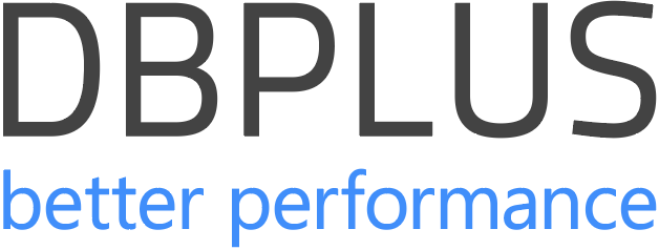As of today, the Oracle database is still the most popular database out there, with a rating score of 1,240.88. Considering all of the factors – its powerful and comprehensive features that cater to large-scale enterprise needs, it comes as no surprise. However, having managed and used numerous Oracle databases over time, we’ve observed several recurring frustrations — problems with Oracle database that can pose significant challenges for its users. From the complex and often opaque licensing structure to high costs and aggressive sales tactics, taking care of the Oracle ecosystem requires constant awareness and a willingness to adapt, at any second.
1. Complex Licensing
Oracle’s licensing structure is notoriously difficult, characterized by its opacity and complexity. If it were to be likened to a hurdle, comparing it to a high wall without ladders would be more accurate. The surprise of unexpected fees and often budget unfriendly audits come as a sudden and unwelcome, which despite not being a technical issue, is one of the problems with Oracle database.
A Cascade of Fees and Fines
Oracle’s licensing terms are layered and complicated, often leading unsuspecting users to inadvertently violate their agreements. Consider features like Real Application Clusters (RAC) and Data Guard—essentials for many businesses. Users might assume their initial database license covers these, only to find out during an audit that these features come with their own price tags, and hefty ones at that.
The Audit Trouble
It’s during these audits that many organizations discover discrepancies between their license agreements and their actual usage. It doesn’t matter if it’s a misunderstood server license or a misconfigured virtual environment. Oracle’s auditors, contrary to users, are specialized in finding these discrepancies, resulting in a likelihood of them unearthing some costly issues.
The feeling that Oracle might be playing a high-stakes game of “gotcha” with audits does little to endear them to their customer base. Consequently, many companies find themselves not just paying for their usage, but also for their misinterpretations of the licensing agreements—a pricey school of hard knocks.
2. High Cost
Oracle’s database solutions, aside from their capabilities are also known for their impact on the wallet. The high cost of entry and ongoing maintenance can be prohibitively expensive, especially for small to mid-sized businesses and startups. It often creates a financial barrier that forces these smaller entities to reconsider their database solutions before they’ve even fully embraced what Oracle offers.
A Heavy Burden for Growing Businesses
For many growing companies, every dollar counts, and Oracle’s pricing structure can quickly deplete limited IT budgets. The initial licensing fees are just the tip of the problems with Oracle database iceberg, as it also requires substantial annual support fees that continue to strain budgets year after year. The ongoing financial commitment can divert funds from other critical areas, such as product development or market expansion, which are indispensable for a young or growing company.
Alternatives on the Rise
In contrast, open-source solutions such as PostgreSQL present a compelling alternative, offering many of the same functionalities at a fraction of the cost. These platforms reduce upfront expenditures while also allowing for more predictable ongoing expenses without the hefty annual support fees that come with Oracle. For many businesses, the cost-effectiveness translates into substantial savings and greater flexibility in IT budget allocation.
3. Aggressive Sales Tactics
Oracle’s sales team is notorious for their intrusive tactics, which can leave IT managers feeling cornered. One common method involves the threat of compliance audits—an effective tactic that exploits the fear of non-compliance fines to coerce companies into purchasing additional licenses or services they may not need. Although this tactic does increase immediate sales it also promotes a climate of anxiety and urgency that can lead to hasty decision-making.
Rushed Decisions and Regret
Adding to the issue, Oracle often offers significant discounts towards the end of financial quarters or fiscal years, presenting these as “once-in-a-lifetime” opportunities. While on the surface these offers may seem beneficial, they’re frequently designed to accelerate the sales cycle, pressuring companies to commit before they’ve had the chance to fully evaluate their needs. This can result in substantial overspending, locking organizations into costly and often unnecessary services.
The aftermath of these rushed decisions can go deep, leaving IT departments with overspecified systems that drain their budgets and offer little return on investment. This mismatch between cost and utility can hamper long-term technological strategy and growth, forcing companies into cycles of expenditure that detract from other critical investments.
4. Complexity in Management and Maintenance
Oracle’s database technology is powerful but managing it is not for the faint-hearted. From partitioning and performance tuning to upgrades and security patches – every click requires a deep understanding of Oracle’s intricate systems. This expertise is not commonplace and typically goes beyond the skill set of generalist IT staff. This leads companies to seek out specialists with the Oracle know-how.
The Price of Expertise
The cost of hiring Oracle-qualified experts is steep, factoring in not just hefty salaries but also the continual training needed to keep up with Oracle’s constant updates and new functionalities. For many companies, especially not-so-colossal ones, these costs can be a tough pill to swallow.
The alternative – training your current staff to handle Oracle’s complexities is not free of the downsides either. Oracle’s training and certification are thorough and pricey. And with the always-changing nature of Oracle’s technology, this isn’t a one-and-done deal. Continuous education is a must, adding to the ongoing expenses.
5. Customer Support Issues
There’s nothing more disheartening than reaching out for help and receiving a response that feels copied from a generic script. When you’re facing a unique challenge, generic answers just don’t cut it. You need insights and solutions that are as specific as the specific problems with Oracle database that you’re facing. What you don’t need are broad strokes that leave you back at square one.
This lack of tailored support can turn urgent troubleshooting into a protracted ordeal, pushing businesses to seek expensive third-party help or, worse, leaving them to deal with disruptions that ripple through their operations.
6. Naming conventions
- Oracle 8i: The ‘i’ was introduced to signify Oracle’s leap into the internet capabilities.
- Oracle 10g: The ‘g’ stood for “grid,” indicating Oracle’s grid computing technology.
- Oracle 12c: The ‘c’ represented “cloud,” highlighting Oracle’s focus on cloud technology.
- Oracle 23ai: Recently, ‘ai’ was added, pointing towards Oracle’s integration of artificial intelligence features.
It’s probably not the greatest of the problems with Oracle database, but hear us out. These suffixes aim to reflect technological evolution and help users anticipate the new capabilities of each release. But they often end up adding a layer of marketing mystery instead. New users might struggle to catch up, and even seasoned professionals might find the continual change puzzling.
This naming strategy not only requires a learning curve to understand the significance behind each new letter but also demands that users stay continually updated with Oracle’s evolving branding. Users should be able to look at a version name and immediately grasp what’s new and why it might be relevant to them without needing to translate a letter or decode a suffix.
7. Pushing the Use of PL/SQL Procedures
PL/SQL, Oracle’s procedural extension to SQL,deeply integrated into the Oracle Database environment, allows for sophisticated data manipulation and business logic encapsulation directly within the database. However, Oracle’s push for using PL/SQL procedures often comes without sufficient warning about the potential downsides. As systems scale and become more complex, managing and optimizing these procedures can become … troublesome.
One of the primary challenges with PL/SQL is scalability. Procedures that perform well in a small, controlled environment can become bottlenecks as the amount of data and the number of users increase. PL/SQL procedures often involve complex logic that can be hard to scale horizontally across multiple database instances or nodes.
From a management perspective, PL/SQL requires a high level of expertise to maintain and optimize. As businesses evolve and their data grows, maintaining efficiency within PL/SQL procedures can demand increasingly sophisticated optimization strategies. This often requires dedicated specialists who not only understand PL/SQL but also the specific ways it interacts with Oracle’s architecture.
8. Costly Certifications: A Questionable ROI
There’s a growing disconnect between what Oracle certifications test and what the industry needs. Many IT departments and tech companies are looking for skills that can directly contribute to solving practical issues and improving systems. They value hands-on experience and abilities to solve problems with Oracle database over theoretical knowledge. This difference between the certification curriculum and industry requirements can leave certificate holders well-versed in Oracle’s technologies but less prepared to handle the practical challenges they will face in actual work environments.
What makes matters worse is the fact that obtaining an Oracle certification is a costly affair.
9. Constantly Changing Path
Oracle’s reputation for complexity is well-earned – its habit of frequently changing development paths and product strategies being one of the reasons.
As soon as users become proficient with a current setup or feature set, Oracle may introduce a new update that completely alters the playing field. This results in a cycle of endless training and adaptation, straining resources and diverting focus from other vital IT functions. This complicates already complicated long-term technology strategies and budgeting. Organizations require a stable technological foundation to plan effectively; without it, every change demands costly and time-consuming adjustments. It’s akin to building a house on shifting sands, where each alteration risks the integrity of the entire structure.



